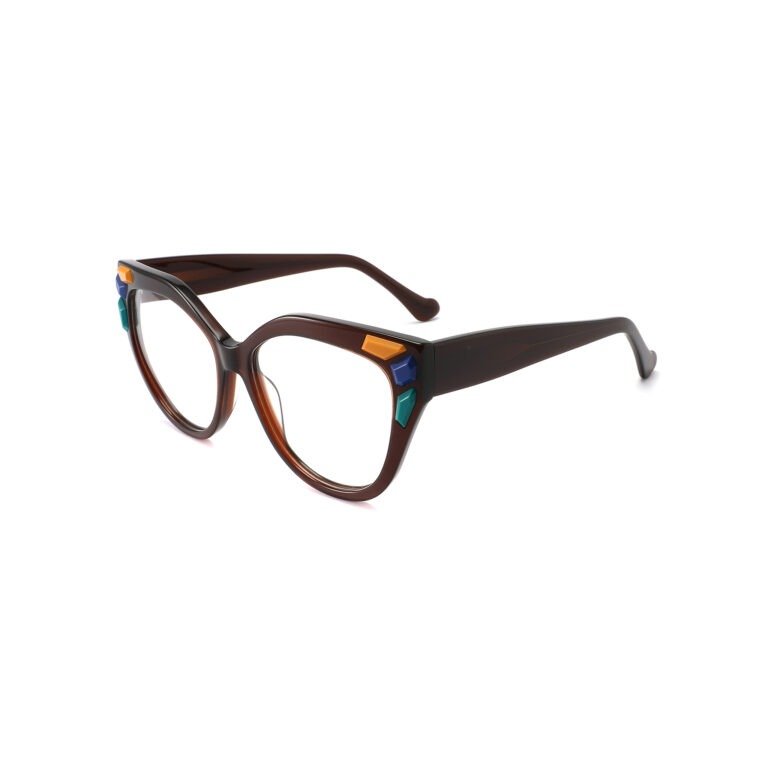In today’s vision-conscious world, prescription eyewear is more than just a tool for clearer sight—it’s a lifestyle choice, a fashion accessory, and even a form of protection. Whether you’re new to glasses or looking to update your current pair, understanding the most popular types of prescription eyewear can help you make an informed decision. As a prescription eyewear manufacturer or consumer, it’s important to know what’s trending and what suits individual needs.
In this article, we’ll explore five popular types of prescription eyewear, diving into their uses, advantages, and what makes them a top choice among eyewear users worldwide.
1. Single Vision Glasses: The Everyday Essential
What Are Single Vision Glasses?
Single vision lenses are the most commonly prescribed type of prescription eyewear. They are designed to correct vision at a single distance—either for near or far-sightedness.
Who Needs Them?
These lenses are ideal for people with one specific vision problem, such as myopia (nearsightedness) or hyperopia (farsightedness). They’re also suitable for younger individuals who don’t yet require multifocal lenses.
Why They’re Popular
Single vision glasses are typically more affordable and lightweight. Most prescription eyewear manufacturers offer a wide range of frame styles to accommodate single vision lenses, making them a great choice for first-time wearers or anyone wanting simple, effective vision correction.
2. Bifocal Glasses: Two Prescriptions in One
What Are Bifocal Glasses?
Bifocal lenses combine two prescriptions in one lens, usually separated by a visible line. The upper portion is for distance vision, while the lower section is for near tasks like reading or using a phone.
Who Needs Them?
Bifocal lenses are commonly used by people over 40 who experience presbyopia, a natural age-related condition that affects the eye’s ability to focus on close objects.
Advantages
-
Convenience of having two vision corrections in one lens.
-
No need to switch between reading and distance glasses.
-
Readily available from most prescription eyewear manufacturers.
Considerations
Some users find the transition line visually distracting. However, manufacturers now offer more seamless alternatives like progressive lenses.
3. Progressive Lenses: Seamless Vision Correction
What Are Progressive Lenses?
Progressive lenses, also known as no-line bifocals or multifocal lenses, provide a gradual transition between multiple prescriptions (distance, intermediate, and near vision) without visible lines on the lens.
Why Choose Progressives?
-
Provide a more natural visual experience.
-
Ideal for daily tasks like driving, computer work, and reading.
-
Eliminate the need for multiple pairs of glasses.
A Modern Solution from Leading Manufacturers
Progressive lenses are often considered a premium option and are available from almost every prescription eyewear manufacturer. These lenses require precise measurements and fitting, emphasizing the importance of quality production and lens customization.
4. Photochromic Lenses: The Light-Adaptive Choice
What Are Photochromic Lenses?
Photochromic, or transition lenses, automatically darken in response to UV light and return to clear indoors. This type of lens is perfect for those who want both vision correction and protection from sunlight.
Benefits
-
Two-in-one functionality: glasses and sunglasses.
-
UV protection for long-term eye health.
-
Reduced glare and improved comfort in bright conditions.
Who Should Consider Them?
Photochromic lenses are ideal for individuals with active lifestyles or those who frequently move between indoor and outdoor environments.
Manufacturing Innovations
Top prescription eyewear manufacturers now use advanced materials to speed up the darkening and clearing process. Many also offer blue light filtering photochromic options for additional screen-time protection.
5. Blue Light Filtering Glasses: The Digital Defender
What Are Blue Light Glasses?
These lenses are designed to reduce the amount of blue light entering the eyes, typically emitted from screens like smartphones, tablets, and computers. Many of them also come with a mild prescription or are combined with other vision correction types.
Why They’re in Demand
In the digital age, screen time has skyrocketed. Prolonged exposure to blue light can lead to digital eye strain, disrupted sleep patterns, and long-term retinal stress.
Features
-
Anti-reflective coating for enhanced screen clarity.
-
Blue light filtering technology embedded in the lens material.
-
Available as single vision, progressive, or non-prescription lenses.
Manufacturer Insight
Prescription eyewear manufacturers are integrating blue light filters into a wide range of lens types, reflecting the growing demand among younger, tech-savvy consumers.
Choosing the Right Type of Prescription Eyewear
When choosing prescription eyewear, it’s essential to consider not only your vision needs but also your lifestyle, budget, and aesthetic preferences. Here’s a quick guide to help you decide:
| Type of Eyewear | Best For | Key Benefit |
|---|---|---|
| Single Vision | General vision correction | Simple, lightweight, affordable |
| Bifocals | Presbyopia and dual vision needs | Two-in-one lens |
| Progressives | Seamless multi-distance vision | Natural transition, no lines |
| Photochromic Lenses | Indoor/outdoor use and sun protection | Light adaptive, UV blocking |
| Blue Light Glasses | Screen-heavy users and digital workers | Reduces eye strain and improves comfort |
The Role of Prescription Eyewear Manufacturers
As consumer needs evolve, prescription eyewear manufacturers play a crucial role in developing high-quality, innovative products. From lightweight lens materials like polycarbonate and Trivex to cutting-edge lens coatings, the manufacturing process is as important as the design.
What to Look for in a Reliable Manufacturer
-
Lens Accuracy: Precision in prescription cutting and fitting.
-
Frame Variety: Styles to suit all face shapes and personal tastes.
-
Customization: Ability to combine features like photochromic + progressive + blue light filters.
-
Certifications & Compliance: Ensure materials meet safety and health standards.
The most trusted manufacturers invest in R&D, collaborate with eye care professionals, and follow strict quality control protocols to deliver eyewear that enhances both vision and comfort.
Final Thoughts
Whether you’re nearsighted, farsighted, managing presbyopia, or simply spending long hours in front of a screen, there’s a prescription eyewear solution tailored for your lifestyle. The five types discussed—single vision, bifocal, progressive, photochromic, and blue light filtering glasses—are among the most popular and widely produced by leading prescription eyewear manufacturers.







